For this week's tech leader spotlight, Code got to hangout with SendGrid's Sr. Director of People Operations: Josh Ashton. With a job more focused on people than programming, Josh gives a new insight into the startup scene and the many important roles that fuel the Denver community.
What is your involvement in the Denver tech community?
I’ve been in the Denver tech community since around 2002. I’d say my primary influence and involvement has been in talent acquisition - helping companies attract and hire the best talent in the market.
However, over the last 5 years via my role as Head of People Operations at SendGrid, I’ve expanded my expertise beyond recruiting and have humbly helped the company scale and sustain an amazing culture through talent engagement and development.
Additionally, I’ve been privileged to get involved in the diversity & inclusion space and community, striving to be a thought and change leader both locally and nationally.
You’ve talked about how one of your main passions is organizational psychology, can you tell me a little about that?
When I was a senior at Colorado State, the school launched an industrial organizational (IO) Psych masters program, which, I believe, is now one of the top programs in the country. That’s where I got more formally introduced to Org Psych and the possibility of it being a career option for me. In that program and in one of the classes I took, we were lucky enough to help a few local businesses who were looking to understand the psychology of their organization and business, their culture, by doing assessments and analysis for them. I found myself really loving the challenge of this; it definitely spoke to me. So after school, I began an HR internship to further explore; fast-forward 14 years later and I am still doing what I love to do.
What’s exciting to me now, is that IO Psych really is at the forefront and strategic in how companies are running their businesses. They are far more in tune with their people: how they are wired, the various people analytics within their company -- they are paying attention to this data more than ever before. I think that this is due to the rise of the “network”, the days of formal hierarchical systems are phasing out, leaders of companies are truly working for their staff and have to compete with other progressive, people-oriented companies to win the war on talent.
What types of projects do you like working on for fun?
I do love the hunt for talent. And, specifically, trying to find people you may not need right now, but you know you’ll eventually need. That’s where the real success in recruiting is, finding talent and solving business challenges before you’ve truly identified it or before it’s too late.
Additionally, I enjoy working in the diversity & inclusion community. Shortly after starting at SendGrid, I was fortunate to be handed the torch of ensuring SendGrid continued to be a partner and influencer. I was initially connected with the National Center for Women in IT (NCWIT) and over the years have been fortunate to get even further involved with them. I was asked to step up and be a part of their volunteer-based leadership team, which really opened my eyes to something that I’ve always had a passion for. So, the classic question, you know, if I won the lottery and money wasn’t a factor, what would I do? I would choose to work for a non-profit that’s focused on diversity and inclusion.
What is your workspace like?
Because of my role, I’m in a lot of meetings and also deal with a lot of sensitive information so I often sit in my office. But what we subscribe to at SendGrid is more of an open office environment, both in design and in philosophy. We are an extremely transparent company, which helps with building trust and employee engagement, then from a workspace design standpoint, it’s pretty open, but we try to give as many options for our employees to find quiet spots, unconventional and fun working spaces, and enough conference rooms for privacy.
Where do you get the most work done outside of the office?
I used to travel a lot, I was probably on a plane once or twice a month. And for me, it’s the weirdest thing, but I’ve found that I can actually get a lot of work done 30,000 feet in the air. Whether it’s reading a book on business management, culture, or organizational strategy and getting ideas from that or kicking off / working on a work project, something about those Southwest peanuts get my creative juices flowing.
10 Tips for Being Super Productive on Your Next Flight via Entrepreneur Magazine.
What’s the coolest technology you are currently working with?
I think I’d have to say Culture Amp, which is an employee engagement survey tool. Sounds pretty boring, right? But Culture Amp has really disrupted the old employee survey industry and made it interesting again. For example, at SendGrid we have about 300 employees and there is almost 100% participation, which speaks to the user experience of the tool itself. It’s designed really well and elicits the right types of answers. It blends both qualitative commentary from our employee base as well as aggregated quantitative data. Which, for an HR professional, that’s liquid gold. With leaders paying attention to what people are saying more than every before, having the right mechanisms or vehicle to pull out and analyze the feedback is really powerful.
New trends/technology you are excited about?
There is a lot of momentum and investment in the HRIS or Human Capital Management (HCM) space. What’s happening in the HR field right now is that you have all these separate best-in-breed startups that are disrupting the industry by perfecting parts of the employee life cycle - like recruiting, workforce management, performance, benefits, or surveys. But what needs to happen is either a) these best-of-breeds expand to build products to encompass the full life cycle, b) they integrate together better, or c) the larger, more established HR tech companies acquire some of these best-of-breed tools to reinvent or supplement their one-platform gaps. Regardless, I’m excited about that the evolution happening in the market allowing HR professionals and more importantly employees or managers to better self-serve through various people software and tools.
What is your favorite part about the Denver tech community?
The Denver tech community has really come a long way in the last 4-5 years. There’s also a bridge forming between Denver and Boulder. Boulder is one of those special places that you think about as a real give-first, entrepreneurial ecosystem, and we’re seeing Denver partnering and adopting those practices and gaining some real momentum.
Take Denver Startup Week. Every single year, attendance is up, presentations get better, and more of the community is involved. It’s not that it’s necessarily competing with Boulder Startup Week, but I believe that eventually both communities will come together for a Colorado Startup Week, and that will be really special.
If you could change one thing about the Denver tech scene, what would it be?
I’d love to see more flagship tech companies outside of Colorado move here. We’ve seen some progress, with Google and Twitter, and some others, but I would love to see more. Denver, and Colorado for that matter, has so much to offer.
More on Josh:
Josh's blog entries for SendGrid



